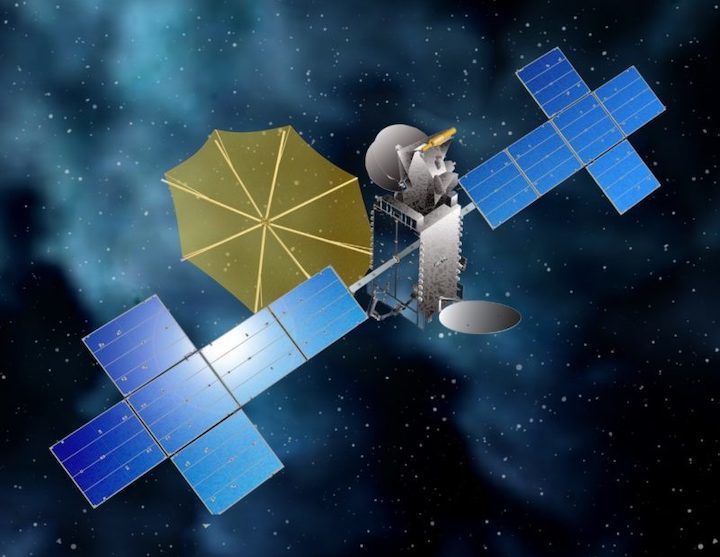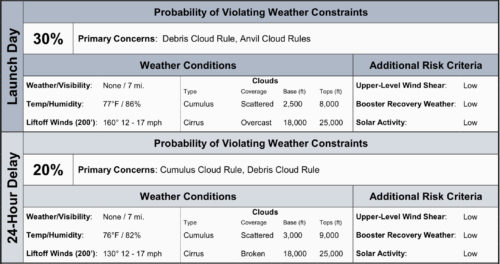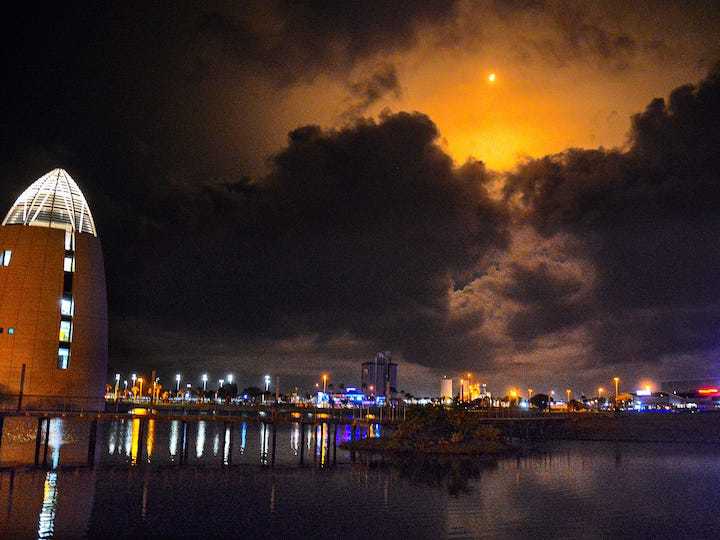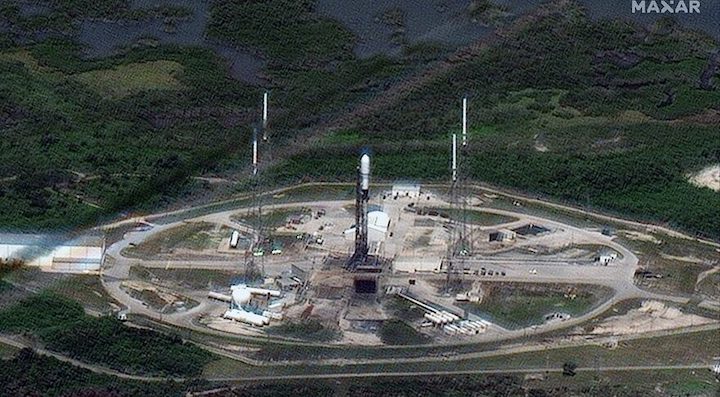5.06.2021

5Jun2021 12:58:27 Eastern
Weather 70% GO
The 45th Weather Squadron have released the L-1 day forecast for the nearly 2 hour launch window tonight. This predicts a 70% chance of acceptable conditions during the window. The primary concerns are violation of the debris cloud and anvil cloud rules.
Should the 24 hour reset window be required then the chances improve to 80% Go with concerns of the Cumulus Cloud and Debris Cloud rules.
For both days the risks in the recovery area are low. 
5Jun2021 12:34:15 Eastern
Third launch for the First Stage
Falcon 9’s first stage booster previously supported SpaceX’s Crew-1 and Crew-2 missions, which launched astronauts to the International Space Station. Following stage separation, SpaceX will land Falcon 9’s first stage on the “Just Read the Instructions” droneship, which will be located in the Atlantic Ocean.
Jun 6 - Falcon 9 : SXM-8 Launch site Cape Canaveral AFB, FL
Launch Date Jun 6
From Launch Pad LC-40
Launch Window : 12:26 - 2:25am Eastern (4:26-6:25 GMT)
SpaceX will launch a Falcon 9 rocket carrying a communications Satellite for Sirius XM. Codenamed SXM-8 the satellite will be placed into a geo-synchronous orbit.
SXM-8 is a high powered broadcasting satellite providing Sirius's digital radio service throughout North America without the need for a satellite dish.
Quelle: AS
----
Update: 6.06.2021
.
SpaceX launches latest SiriusXM satellite from Florida, sticks drone ship landing

A SpaceX Falcon 9 rocket soared from Cape Canaveral early Sunday, generating its signature low-frequency rumble that reverberated across the Space Coast well into several minutes after liftoff.
The 230-foot rocket loaded with nearly a million pounds of propellant and SiriusXM's newest radio-service satellite took flight from Launch Complex 40 at 12:26 a.m. and quickly ascended into overcast skies. The first stage then landed on the Just Read the Instructions drone ship, completing its fourth mission to date.
Thirty-three minutes after liftoff, SpaceX confirmed the rocket's second stage successfully delivered the SXM-8 satellite to orbit, where it's expected to last up to 15 years.
SXM-8 follows last December's launch of SXM-7, which also launched from the Cape on a Falcon 9 but suffered several failures after it was delivered to orbit. In January, SiriusXM confirmed it filed a $225 million insurance claim for the spacecraft and said its digital radio service would not be impacted.
Like SXM-7 and other satellites, SXM-8 will undergo on-orbit testing in the coming weeks. Both were built by Maxar in in Palo Alto, California.
Sunday's launch marked the 19th of the year for the Space Coast, 18 of which have been hosted by Falcon 9. So far in 2021, SpaceX has launched more missions in just six months than its entire 2019 manifest combined – and more than a dozen more are expected before the year is out.
Including SXM-8, Falcon 9 has flown 120 successful missions since its introduction in 2010. The latest version, Block 5, debuted almost exactly three years ago in May 2018.
Quelle: Florida Today
+++
SpaceX launches SiriusXM satellite

Updated 10:20 a.m. Eastern with Maxar announcement of post-launch contact with SXM-8.
WASHINGTON — SpaceX successfully placed into orbit a Maxar-built satellite for for SiriusXM Satellite Radio June 6, six months after the launch of a similar satellite that later malfunctioned in orbit.
The Falcon 9 lifted off at 12:26 a.m. Eastern from Space Launch Complex 40 at Cape Canaveral Space Force Station. The rocket’s first stage, which previously launched the Crew-1 and Crew-2 commercial crew missions for NASA, landed on a droneship in the Atlantic Ocean 8 minutes and 45 seconds after liftoff.
The rocket’s upper stage deployed its payload, the SXM-8 satellite, into a geostationary transfer orbit 32 minutes after liftoff. Maxar announced several hours later that controllers has made contact with the spacecraft, which has deployed its solar arrays and started firing thrusters to move into geostationary orbit.
SXM-8, which weighed nearly 7,000 kilograms at launch, is effectively identical to SXM-7, which launched in December 2020 on another Falcon 9. While that launch was successful, Maxar and SiriusXM disclosed in January that the spacecraft suffered “failures of certain SXM-7 payload units.”The companies didn’t disclosed details about the failures.
SiriusXM, in its quarterly financial results published April 28, took a $220 million charge to its net income because of what it now called the failure of the satellite. “The evaluation of SXM-7 concluded that the satellite will not function as intended, which we considered to be a triggering event,” the company stated in a filing with the U.S. Securities and Exchange Commission (SEC). “SXM-7 was determined to be a total loss.”
While the company took a $220 million, it noted that it has insurance on the satellite valued at $225 million. SiriusXM said it planned to file a claim on SXM-7 in the second quarter. “At this time, we are unable to reliably estimate the timing and amount of insurance recoveries,” it stated in the SEC filing.
Maxar, in a May 3 quarterly report filed with the SEC, took a change of $28 million associated with the loss of SXM-7. “After exhausting efforts to fully recover the satellite and further discussions with Sirius XM, in April 2021, we made the determination to record the cumulative adjustment to revenue,” the company stated. That charge included $25 million in final milestone payments for the satellite it will not receive and $3 million to cover costs associated with efforts to recover the satellite.
SiriusXM played down the effect of the loss of SXM-7, which, along with SXM-8, were intended to replace the XM-3 and XM-4 satellites that have been in orbit since the mid-2000s. SiriusXM said in its SEC filings than it believes that XM-3 and XM-4 can continue to operate for several more years, and it has in orbit XM-5, a spare satellite launched in 2010.
Sean Sullivan, chief financial officer of SiriusXM, said in an April 28 earnings call that the company has released a request for proposals for a replacement satellite. He did not disclose the schedule for acquiring or launching that replacement satellite.
Quelle: SN

